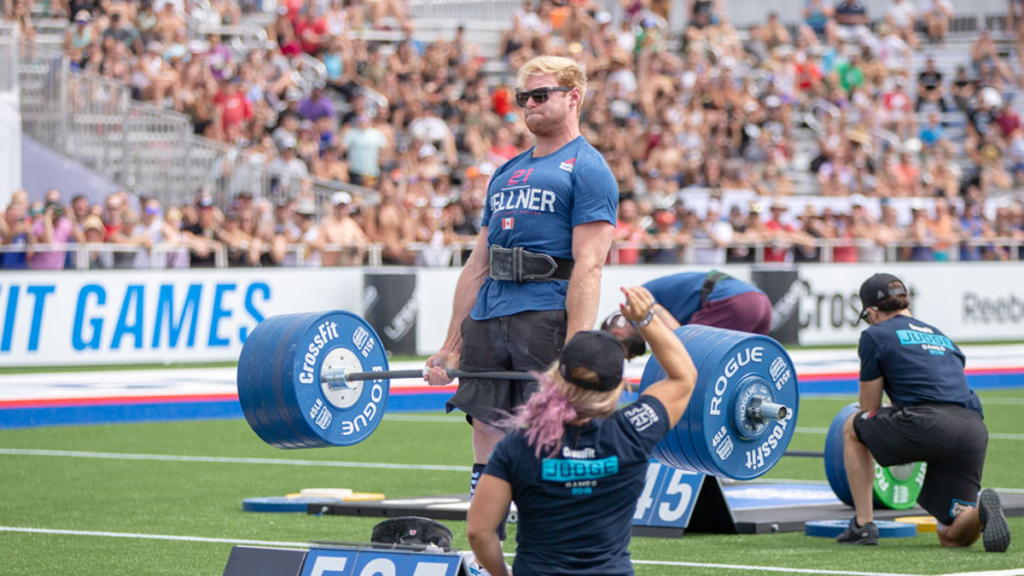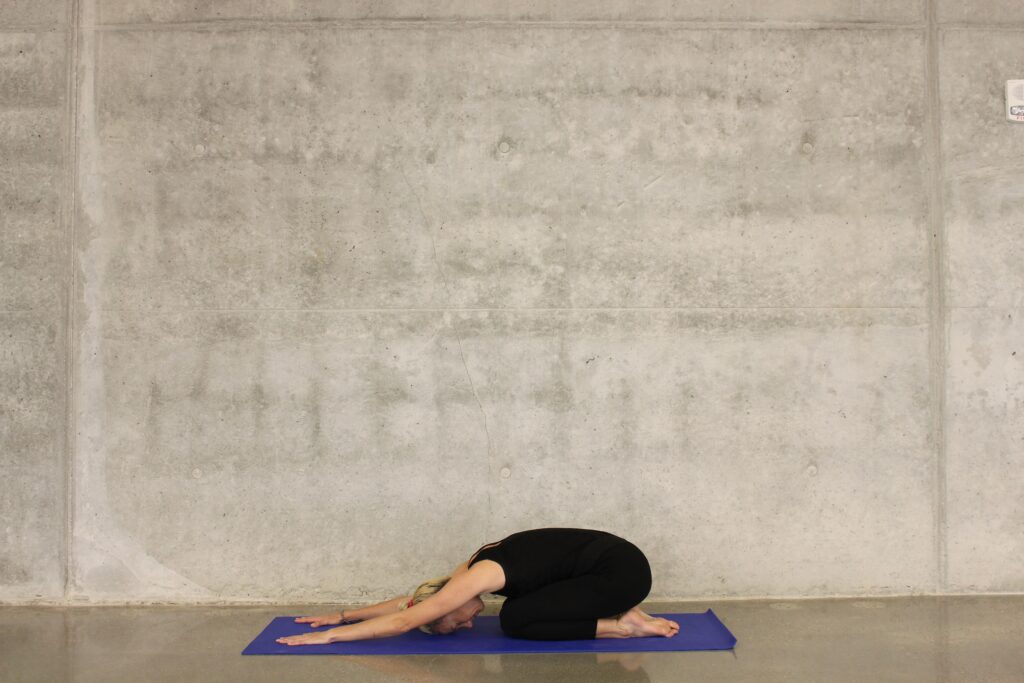Use these ways to build stamina and enhance your body and fitness.
Stamina, often synonymous with endurance, is the physical and mental capacity to sustain prolonged physical or mental effort. It’s a cornerstone of athletic performance and a critical element in the world of sports and fitness.
Whether you’re sprinting to the finish line, pushing through the last set of a grueling workout, or simply trying to improve your daily functional activities, stamina plays a pivotal role. It’s not just about the ability to endure longer; it’s also about performing actions more efficiently and with greater strength over time.
Increasing stamina has far-reaching benefits that extend beyond the playing field or gym. It’s linked to improved cardiovascular health, lower risks of chronic diseases, enhanced muscle strength, and better mental health outcomes.
For athletes and fitness enthusiasts alike, working on stamina means they can train longer, perform better, and recover more quickly between sessions. But the benefits of enhanced stamina are not reserved for the elite; even individuals engaging in regular physical activities can enjoy a higher quality of life, increased energy levels, and a more robust immune system.
In the pursuit of better health and performance, building stamina is a goal that aligns with virtually every fitness objective, from weight loss to achieving personal bests in sports competitions. It’s about pushing the limits of what your body and mind can handle, not just once but consistently over time. This introduction will guide you through the best ways to build and boost your stamina, laying the foundation for achieving your sport and fitness aspirations.
1. Ways to Build Stamina: Consistent Aerobic Exercise
Aerobic exercise, often referred to as cardio, is the cornerstone of any stamina-building program. Activities such as running, cycling, and swimming are exemplary in enhancing cardiovascular health, which is central to increasing stamina.
These exercises work by raising your heart rate to a level where oxygen is used to fuel the muscles, thereby improving the efficiency of your heart and lungs. Over time, consistent aerobic training leads to significant improvements in how your body utilizes oxygen, directly contributing to increased stamina and endurance.
For those looking to boost their stamina through aerobic exercise, starting with moderate sessions is key. This approach allows your body to adapt to new demands without the risk of overexertion or injury. Begin with sessions that challenge you slightly but are within your comfort zone, gradually increasing the intensity and duration as your fitness level improves. For example, start with a 20-minute jog, a 30-minute bike ride, or a 15-minute swim, slowly building up the time and intensity of these workouts.
Incorporating interval training into your aerobic routine can further enhance your cardiovascular capacity and stamina. Interval training involves alternating periods of high-intensity exercise with periods of lower intensity or rest.
This method not only boosts your aerobic capacity faster but also increases the total amount of calories burned during a workout, contributing to weight loss and muscle building. High-Intensity Interval Training (HIIT) sessions, for instance, can be especially effective in pushing your cardiovascular system to adapt and improve.
By stressing your heart and lungs in this way, you force them to recover and adapt during the lower intensity intervals, significantly improving your stamina over time.
The beauty of aerobic exercise lies in its versatility and the wide range of options available, making it accessible to virtually anyone. Whether it’s taking a brisk walk, joining a dance class, or hitting the trails for a run, the key is consistency.

Regular engagement in aerobic activities not only bolsters your physical stamina but also contributes to better mental health by reducing stress, anxiety, and depression. As you build a habit of consistent aerobic exercise, you’ll notice a gradual but significant improvement in your ability to perform activities of daily living with ease, leading to a healthier, more energetic life.
2. Ways to Build Stamina: Strength and Resistance Training
Strength and resistance training, while often associated with building muscle mass and improving strength, plays a crucial role in enhancing stamina and endurance. This form of training involves exercises that cause muscles to contract against an external resistance with the expectation of increases in strength, tone, mass, and endurance.
When you build muscle through such training, you’re not only increasing the muscle’s ability to work under strain but also improving its efficiency in using energy and resisting fatigue. This directly contributes to greater stamina, as your muscles can perform for longer periods before succumbing to exhaustion.
 Source: Photo Courtesy of CrossFit Inc
Source: Photo Courtesy of CrossFit IncIncorporating exercises that target the major muscle groups is essential for a balanced strength and resistance training program.
Some effective examples include:
- Squats: Targeting the quadriceps, hamstrings, and gluteus muscles, squats are a powerful exercise for building lower body strength and endurance.
- Deadlifts: Engaging the lower back, glutes, hamstrings, and calves, deadlifts are excellent for overall posterior chain development.
- Push-ups: A versatile exercise that strengthens the chest, shoulders, triceps, and core muscles.
- Pull-ups: Effective for developing upper body strength, targeting the back, shoulders, and arms.
- Planks: Great for core strengthening, which is vital for overall stability and endurance.
These exercises can be integrated into your fitness routine in various ways, depending on your goals, fitness level, and preferences. For those new to strength and resistance training, starting with bodyweight exercises or light weights is advisable, focusing on form and gradually increasing the resistance as strength and endurance improve.
Balancing workout intensity is paramount to avoid overtraining and ensure adequate recovery. Overtraining can lead to fatigue, decreased performance, and increased risk of injury, all of which can set back your stamina-building efforts. To prevent this, listen to your body and incorporate rest days into your training regimen.
Additionally, varying your workouts and including lighter training days or different forms of exercise can help maintain a healthy balance. Adequate recovery, including sufficient sleep and proper nutrition, supports muscle repair and growth, which is essential for improving stamina and endurance through strength and resistance training.
Ultimately, strength and resistance training should be seen as a complementary component to your overall fitness plan, enhancing not just muscle endurance but contributing significantly to your stamina and performance in various physical activities.
3. Ways to Build Stamina: Proper Nutrition and Hydration
Proper nutrition and hydration are the fuel and lubrication that keep the engine of your body running smoothly, especially when you’re pushing it to the limits to build stamina and enhance performance.
A balanced diet rich in essential nutrients serves as the foundation for sustaining energy levels, improving endurance, and ensuring recovery. This nutritional strategy should focus on a mix of carbohydrates, proteins, fats, vitamins, and minerals, as each plays a unique role in supporting physical activities.
Carbohydrates are the primary energy source for your muscles during both low and high-intensity exercises. Consuming a diet with adequate carbohydrates ensures that your body has the energy reserves needed to perform and endure longer training sessions.

Proteins are crucial for muscle repair and growth, aiding in the recovery process and enhancing muscular endurance over time. Healthy fats provide a concentrated source of energy, particularly beneficial during extended periods of physical activity. Additionally, vitamins and minerals support various bodily functions, including muscle contraction, oxygen transport, and energy production, all vital for maintaining stamina.
Hydration is equally crucial for optimal performance and stamina. Water regulates your body temperature, lubricates joints, and helps transport nutrients to give you energy and keep you healthy. Being even slightly dehydrated can lead to fatigue, reduced coordination, and muscle cramps, ultimately affecting your stamina and ability to perform. Thus, maintaining proper hydration before, during, and after exercise is essential to prevent dehydration and ensure peak performance.
Tips for Optimizing Pre- and Post-Exercise Nutrition:
Pre-Exercise: About 2-3 hours before your workout, consume a meal rich in carbohydrates and protein to ensure a steady energy supply. Foods like whole-grain pasta, brown rice, fruits, and lean proteins are excellent choices. If you need a snack closer to your workout time, opt for something light and carbohydrate-rich, such as a banana or a small granola bar, to provide a quick energy boost.
During Exercise: For workouts lasting over an hour, consider hydrating with sports drinks that contain electrolytes and carbohydrates. This can help replenish lost salts and maintain energy levels.
Post-Exercise: Within 30 minutes to an hour after your workout, focus on recovery by consuming a mix of carbohydrates and protein. This helps replenish energy stores and repair muscle tissues. A protein shake with fruit or a chicken sandwich on whole-grain bread can be great options.
Remember, individual needs can vary based on factors like the intensity of the exercise, environmental conditions, and personal health status.
Therefore, listening to your body and adjusting your nutrition and hydration plan accordingly is crucial. Consulting with a sports nutritionist can also provide personalized guidance tailored to your specific goals and needs, ensuring your diet and hydration strategies effectively support your stamina and fitness objectives.
4. Quality Rest and Recovery
Quality rest and recovery are as crucial to building stamina as the workouts themselves. In the pursuit of improved endurance, the significance of allowing the body to rest and heal often goes underappreciated.
Rest days and recovery techniques are vital not only for preventing overtraining but also for enhancing performance and stamina over time.

Overtraining can manifest through symptoms such as persistent fatigue, decreased performance, mood swings, and increased susceptibility to injuries. When the body is subjected to constant, intense training without adequate recovery, it can lead to a state of chronic stress, hindering progress and potentially causing long-term damage. Thus, incorporating sufficient rest and adopting effective recovery strategies are essential for sustainable stamina building.
Strategies for Ensuring Quality Rest and Recovery
Adequate Sleep: Quality sleep is foundational to recovery. During sleep, your body undergoes processes that repair muscle tissue, consolidate memory, and release hormones regulating growth and appetite. Aim for 7-9 hours of sleep per night, creating a restful environment and a consistent bedtime routine to enhance sleep quality.
Scheduled Rest Days: Integrate rest days into your training schedule to allow your body time to repair and recover. These days are crucial for muscle growth, replenishment of energy stores, and prevention of overuse injuries. Rest doesn’t mean complete inactivity but avoiding structured workouts.
Active Recovery: Active recovery involves performing low-intensity exercise after a strenuous workout or on rest days. Activities like walking, yoga, or light cycling can enhance circulation, helping to flush out toxins and deliver nutrients to the muscles, aiding in faster recovery.
Stretching and Mobility Exercises: Incorporating stretching and mobility work can improve flexibility, reduce muscle tightness, and enhance overall performance. Techniques like dynamic stretching before workouts and static stretching afterwards can help maintain muscle health and prevent stiffness, contributing to better recovery and stamina.
Hydration and Nutrition: Proper hydration and nutrition play a significant role in recovery. Replenishing fluids lost during exercise and consuming a balanced diet rich in proteins, carbohydrates, and essential nutrients support muscle repair and energy restoration.
Acknowledging the importance of rest and recovery is a crucial step towards building stamina safely and effectively. By allowing the body adequate time to heal and strengthen, you not only prevent the negative impacts of overtraining but also set the stage for improved performance and endurance. Remember, building stamina is a marathon, not a sprint, requiring patience, dedication, and a balanced approach to training and recovery.
5. Mental Conditioning and Consistency
Building stamina is not solely a physical endeavor; it encompasses a significant mental component as well. The journey to enhanced endurance and performance is replete with challenges, requiring not just physical strength but also mental resilience. Addressing the mental aspects of stamina building involves setting realistic goals, maintaining motivation, and effectively dealing with setbacks.
Setting Realistic Goals: Begin by setting achievable goals that align with your current fitness level and long-term aspirations. These goals should be specific, measurable, attainable, relevant, and time-bound (SMART). Realistic goal-setting helps in maintaining focus and provides a sense of direction, making the process of building stamina more structured and manageable.
Staying Motivated: Motivation can fluctuate, and it’s normal to have days when your energy or enthusiasm wanes. To stay motivated, remind yourself of your goals and the reasons behind them. Celebrate small victories along the way, and if motivation dips, try to mix up your routine to keep things interesting. Engaging with a community or workout partner can also provide a motivational boost.
 Source: Courtesy of CrossFit Inc.
Source: Courtesy of CrossFit Inc.Dealing with Setbacks: Encountering obstacles is part of the process. When faced with setbacks, it’s crucial to practice resilience. Reflect on what caused the setback, learn from it, and adjust your plan accordingly. Avoid being overly critical of yourself and recognize that progress is often non-linear.
To enhance mental resilience, consider incorporating the following practices:
Mindfulness Practices: Mindfulness can help in managing stress, improving focus, and enhancing awareness of your body’s needs. Techniques like meditation or deep-breathing exercises can aid in developing a calm and focused mindset, beneficial for both training and recovery.
Visualization Techniques: Visualization involves mentally rehearsing your performance or visualizing yourself achieving your goals. This practice can enhance motivation, boost confidence, and prepare you mentally for the challenges ahead.
Positive Self-Talk: The way you talk to yourself can significantly impact your performance and resilience. Practice positive self-talk to combat negativity and self-doubt. Encourage yourself as you would a friend, focusing on your strengths and the progress you’ve made.
Consistency in training, nutrition, and rest is the backbone of stamina development. Consistent efforts compound over time, leading to significant improvements in stamina and overall fitness. Establish a routine that balances training with adequate rest and recovery, and stick to a nutrition plan that supports your energy needs and recovery processes. While flexibility is essential to accommodate life’s unpredictability, striving for consistency in these key areas will ensure steady progress toward your stamina goals.
Ultimately, building stamina is a holistic process that requires patience, perseverance, and a balanced approach to physical and mental health. By nurturing your mental resilience and committing to consistency in all aspects of your training, you can achieve remarkable improvements in stamina, setting the foundation for achieving your sport and fitness aspirations.
Conclusion
In conclusion, building stamina is a multifaceted endeavor that requires a harmonious blend of physical training, nutrition, recovery, and mental conditioning. We’ve explored the significance of consistent aerobic exercise in enhancing cardiovascular health and the vital role of strength and resistance training in improving muscular endurance.
Proper nutrition and hydration have been underscored as essential components of sustaining energy levels and facilitating recovery, while the importance of quality rest and recovery has been highlighted as a cornerstone for physical growth and stamina enhancement.
Moreover, the mental aspect of building stamina, including goal setting, maintaining motivation, and embracing resilience, plays a critical role in the journey towards improved endurance and performance.
Integrating these strategies into your fitness routine should be a gradual process, allowing your body and mind to adapt and grow stronger over time. Start with small, manageable changes, and progressively increase the intensity and complexity of your workouts as your stamina improves.
Similarly, make incremental adjustments to your diet and hydration habits to support your energy needs and recovery efforts.
Remember, building stamina is a progressive journey that requires patience, perseverance, and dedication. There will be challenges and setbacks, but with a consistent and balanced approach, you can overcome these obstacles and achieve your fitness goals.
Celebrate your successes, no matter how small, and recognize that each step forward brings you closer to realizing your full potential in sport and fitness. Stay committed, stay motivated, and let the journey to enhanced stamina unfold at its own pace, knowing that the rewards of improved health, performance, and well-being are well worth the effort.
Source link: https://www.boxrox.com/5-best-ways-to-build-stamina-for-sport-and-fitness/ by Robbie Wild Hudson at www.boxrox.com








